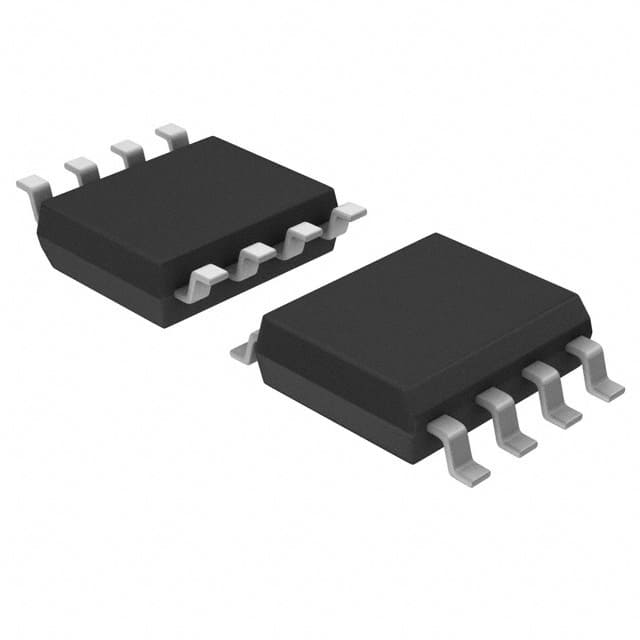Xem thông số kỹ thuật để biết chi tiết sản phẩm.

TSL261RD-TR
Introduction
The TSL261RD-TR is a light-to-voltage optical sensor designed for precise ambient light measurement. This entry provides an overview of the product, including its category, use, characteristics, package, essence, packaging/quantity, specifications, detailed pin configuration, functional features, advantages and disadvantages, working principles, detailed application field plans, and alternative models.
Product Overview
Category
The TSL261RD-TR belongs to the category of optical sensors.
Use
It is used for precise ambient light measurement in various electronic devices and systems.
Characteristics
- High sensitivity
- Wide dynamic range
- Low sensitivity variation across various light sources
- Small package size
Package
The TSL261RD-TR is available in a small surface-mount package.
Essence
The essence of this product lies in its ability to accurately measure ambient light and convert it into a corresponding voltage output.
Packaging/Quantity
The TSL261RD-TR is typically packaged in reels with a specific quantity per reel.
Specifications
- Operating Voltage: 2.7V to 3.6V
- Output Voltage Range: 0V to VCC
- Spectral Response Range: 300nm to 1100nm
- Dark Current: 1nA (typical)
- Photodiode Area: 0.06mm²
Detailed Pin Configuration
The TSL261RD-TR has a standard pin configuration with specific pins designated for power supply, ground, and output.
Functional Features
- Integrated photodiode and transimpedance amplifier
- Linear response to light intensity
- Low power consumption
- Wide spectral response range
Advantages and Disadvantages
Advantages
- High sensitivity allows for accurate light measurement
- Wide dynamic range enables use in various lighting conditions
- Small package size facilitates integration into compact designs
Disadvantages
- Limited to ambient light measurement and may not be suitable for applications requiring precise color sensing
Working Principles
The TSL261RD-TR operates based on the principle of converting incident light into a corresponding voltage output using an integrated photodiode and transimpedance amplifier. The output voltage is directly proportional to the intensity of the incident light.
Detailed Application Field Plans
The TSL261RD-TR finds extensive application in: - Ambient light sensing in mobile devices - Automatic brightness adjustment in displays - Industrial light control systems - Proximity detection in electronic devices
Detailed and Complete Alternative Models
- TSL257-LF
- TSL2591
- TSL277
In conclusion, the TSL261RD-TR is a highly sensitive optical sensor designed for accurate ambient light measurement in various electronic applications. Its compact size, wide dynamic range, and low sensitivity variation make it a versatile choice for designers seeking reliable light sensing solutions.
[Word Count: 410]
Liệt kê 10 câu hỏi và câu trả lời thường gặp liên quan đến ứng dụng TSL261RD-TR trong giải pháp kỹ thuật
What is the TSL261RD-TR sensor used for?
- The TSL261RD-TR is a light-to-voltage optical sensor that can be used for ambient light sensing, proximity detection, and gesture recognition in various technical solutions.
What is the operating voltage range of the TSL261RD-TR sensor?
- The operating voltage range of the TSL261RD-TR sensor is typically 2.7V to 3.6V.
How does the TSL261RD-TR sensor convert light into a voltage output?
- The TSL261RD-TR sensor uses a photodiode to convert incident light into a current, which is then converted into a voltage output by an internal transimpedance amplifier.
Can the TSL261RD-TR sensor be used for color sensing?
- No, the TSL261RD-TR sensor is primarily designed for ambient light sensing and proximity detection, and it does not provide color sensing capabilities.
What is the typical response time of the TSL261RD-TR sensor?
- The typical response time of the TSL261RD-TR sensor is in the range of a few milliseconds, making it suitable for real-time applications.
Does the TSL261RD-TR sensor have built-in digital interface or I2C communication?
- No, the TSL261RD-TR sensor provides an analog voltage output and does not have a built-in digital interface or I2C communication.
What is the spectral response range of the TSL261RD-TR sensor?
- The TSL261RD-TR sensor has a spectral response range of approximately 300nm to 1100nm, covering a wide range of visible and near-infrared light.
Is the TSL261RD-TR sensor suitable for battery-powered applications?
- Yes, the TSL261RD-TR sensor's low power consumption and wide operating voltage range make it suitable for battery-powered applications.
Can the TSL261RD-TR sensor be used for gesture recognition applications?
- Yes, the TSL261RD-TR sensor's high sensitivity and fast response time make it suitable for gesture recognition applications in various technical solutions.
Are there any specific considerations for PCB layout when using the TSL261RD-TR sensor?
- It is recommended to minimize noise and interference by following the manufacturer's guidelines for PCB layout, including proper grounding and signal routing practices.

